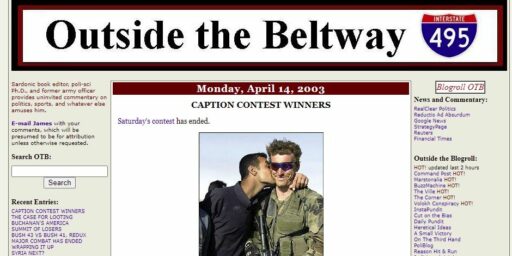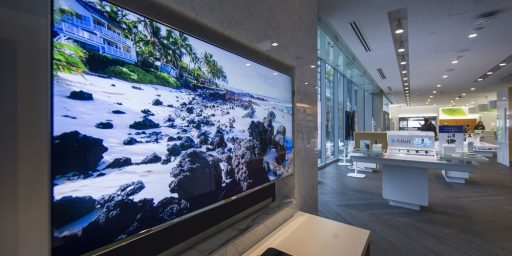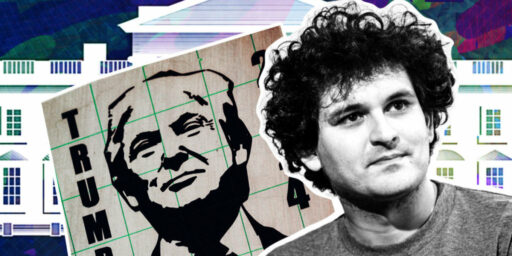Red Media, Blue Media
Stanford political scientist Shanto Iyengar and Washington Post polling director Richard Morin conducted a study that determined that Republicans tend to chose Fox News when they can whereas Democrats preferred CNN or NPR. Given that this so closely conforms to conventional wisdom as to amount to a Blinding Flash of the Obvious, one could argue the time and money they used on this effort wasted. But social scientists spend a lot of time quantifying what we already know and not infrequently find out that what we “know” is wrong.
Morin follows up that piece with an A2 story in today’s edition describing “The Fox News Effect.” It seems that a study by economists Stefano DellaVigna of the University of California at Berkely and Ethan Kaplan of Stockholm University “found that the growth of the Fox cable news network in the late 1990s may have significantly boosted the Republican Party’s share of the vote in the 2000 election and delivered Florida to Bush.” Morin gives us no information on the second study’s methodology except to say that they “compare changes in the Republican vote share from 1996 to 2000 in 9,256 cities and towns where Fox News [which debuted in 1998] was introduced.” Presumably, that share went up. But, then, as the Iyengar-Morin study demonstrates, Fox viewers are those who were already predisposed to vote Republican. How, then, does one attribute a change in voting behavior to Fox?
Thinking these results contradictory, I contacted Morin, who graciously provided a link to the DellaVigna-Kaplan study [PDF].
Our main result is that Fox News had a significant impact on the 2000 elections. The entry of Fox News increased the Republican vote share in presidential elections by 0.4 to 0.7 percentage points, depending on the specification. Since Fox News in 2000 was available in about 35 percent of households, the impact of Fox News on the two-party vote share in 2000 is
estimated to be 0.15 to 0.2 percentage points, 200,000 votes nation-wide. While this vote shift is small compared to the 3.5 percentage point shift in our sample between 1996 and 2000, it is still likely to have been decisive in the close presidential 2000 elections.[…]
Finally, we consider whether the Fox News effect on Presidential elections was mainly a result of voters switching party lines, or of additional voter turnout to the polls. We find that Fox News significantly increased voter turnout, particularly in the more Democratic districts. The impact of Fox News on voting appears to be due, at least in part, to the mobilization of voters, and particularly conservative voters in Democratic-leaning districts.
This finding is interesting and confirmed my guess as to the nature of the influence based on Morin’s column. The question, though, is the degree to which other variables that might lead to increased turnout–most obviously, the fact that the pre-election polls showed a much tighter race than in 1996–were controlled. As best I can gather from a quick readthrough of the methodology and summary tables–and I admit up front that much of the statistical modeling is beyond my understanding–this was not done. The control variables were demographic and media related, designed to test the interaction between certain kinds of people and the news sources they watched, but not those that a political scientist studying voting behavior would have chosen.
Morin notes in his response to my e-mailed question as to the contradictory nature of the findings, “[T]ogether, the items suggest Fox 1) moves some non-Republicans to the GOP and 2) gives true-blue (red?) Republicans what they want, which may deepen or reinforce their existing partisan preference.” That strikes me as not only plausible, but likely.
Unfortunately, the nature of the DellaVigna-Kaplan study, which simply relies on the historical oddity that Fox News emerged as a significant medium between two election cycles, does not permit us to determine the effect in the other direction. That is, those who lean Democrat are more likely to watch CNN or listen to NPR. How much does that behavior reinforce their predisposition and motivate their vote? Furthermore, given that Fox was not an alternative until recently, how many potential Republican voters in 1996 and before were influenced in the “wrong” direction in the old days?






The MSM propaganda machine gives Democrats 8-12 % increase in their voting total. FOX does well but not as good as the left-wing socialist propagandists.
I know it’s old, but it bears repeating: correlation is not causation. I weep for what passes as science these days.